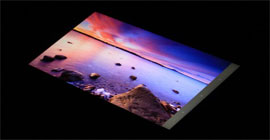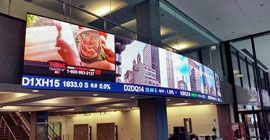Of course, if the big screen (digital signboard) only uses electronic and digital form to do the past "advertisement" thing, its vitality may not be strong. So, what benefits can retail digital signage information collection, analysis and processing bring to retail brands?
He Maisi, vice president of Intel's Internet of Things Business, gave an example to Saidi's reporters. In Las Vegas, airports and rail transit stations are equipped with kiosks (digital signboards). A cosmetics brand wants to put an advertisement for beauty products for women aged 25-35 in these kiosks. Intel's partners helped them build a solution to collect the age, gender, time spent on the kiosk and attention time of the people passing through the kiosk. The results of the information gathered shocked the brand! The people who watched the advertisement were not women aged 25-35 at all, but Asian men aged 55-65. Branders find that the huge amount of advertising they have spent millions of dollars on before actually has little effect.
Another example is the Lego Building Block retail store. Usually, when children enter Lego, they will have a good time in the experience area. But a Lego store has more than 200 products, and it is impossible for every product to open up experience for children. So Intel and Lego worked together to help them develop a specific solution. Set up a LED video screen in Lego, as long as the child or parents hold a box of unopened toys in the screen, through the augmented reality (AR) function, there will be Lego's future 3D effect on the toy box, and it can also rotate and move, and watch in all directions. Lego's sales increased by double digits after deploying solutions in stores.
In the retail industry, we will see more and more Intel. By virtue of their technological innovation strength and the integration ability of software and hardware ecosystems, they are committed to accelerating the transformation of the traditional retail industry and helping customers convert data into value. It aims at supporting users to achieve integrated and seamless retail channels and speeding up the rapid deployment of mature schemes. At the same time, it hopes to help users through data collection, storage, analysis and utilization, tap the huge commercial value contained in consumer behaviour data, guide business decision-making, and flexibly respond to market changes.
Returning to Intel's big strategy in China and promoting consumption upgrading is an important part of China's strategy. Intel executives have repeatedly expressed their desire to be high-value partners in China, including retail. Then, their technology and solutions, such as responsive retail platform, OPS+, SDM (specially designed for thin screen integration, the same OPS specification, but no shell), are devoted to the transformation of the traditional retail industry, promoting the development of real economy, and fulfilling the promise of promoting consumption upgrading.





